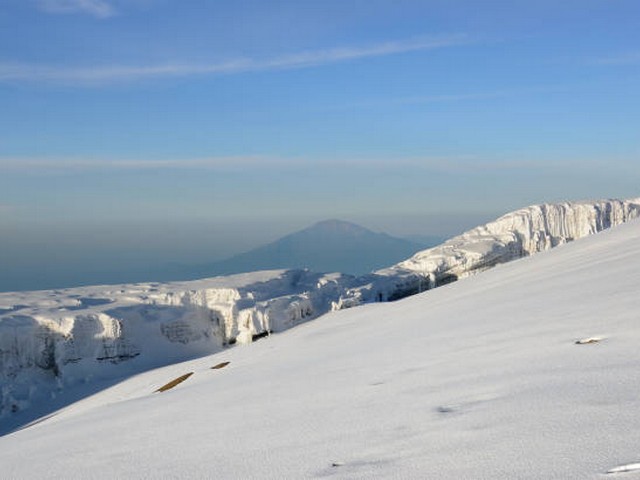Kilimanjaro’s Role in Tanzanian Cultural Heritage
Welcome to our latest blog post from the Kilimanjaro Centre for Trekking and Ecotourism (KCTE), where we not only guide adventurous souls up the majestic slopes of Mount Kilimanjaro but also delve deep into the rich tapestry of Tanzanian culture. Today, we explore the profound impact of Mount Kilimanjaro on Tanzanian cultural heritage, a topic that resonates with the spirit of every traveler seeking to understand the heart of this beautiful land.
The Spiritual Sentinel: Mount Kilimanjaro in Tanzanian Culture
Mount Kilimanjaro is not just Africa’s highest peak; it is a towering symbol of spiritual significance and cultural identity for the Chagga people and other ethnic groups living in its shadows. For centuries, this magnificent mountain has been central to rituals, folklore, and the daily lives of the local communities. It serves as a spiritual sentinel, watching over the land and its people.
The Chagga Legends and Kilimanjaro
Among the Chagga, the indigenous people who have cultivated the fertile slopes of Kilimanjaro for generations, there are numerous legends woven around the mountain. These stories, passed down through oral tradition, often depict Kilimanjaro as a place of God, where the world was created and where the spirits of ancestors reside. This profound connection highlights Kilimanjaro’s role not merely as a mountain but as a sacred entity that shapes spiritual beliefs and practices.
Rituals and Sacred Sites
The foothills of Kilimanjaro house several sacred sites where traditional rituals are still performed. These rituals are a way for the community to connect with the spiritual world, seeking blessings, rain, and good harvests from the mountain gods. The intimate relationship between the people and Kilimanjaro is a beautiful testament to the mountain’s role in sustaining both the physical and spiritual livelihoods of its residents.
Kilimanjaro’s Influence on Art and Storytelling
Art and storytelling are vibrant expressions of Tanzanian culture, where Kilimanjaro often takes center stage. From paintings and songs to dances and tales, the mountain’s majestic beauty inspires a myriad of cultural expressions.
Music and Dance
Local tribes use music and dance to convey stories and emotions associated with Kilimanjaro. Songs about the mountain, often sung during community gatherings and ceremonies, are imbued with themes of endurance, beauty, and reverence. Dances, too, mimic the natural movements of the environment, symbolizing the ascent to the peak and the flow of rivers that spring from its glaciers.
Visual Arts
Tanzanian artists frequently depict Kilimanjaro in their work, using bold colors and textures to capture its ever-changing moods and grandeur. These artworks are a testament to Kilimanjaro’s profound visual impact on the local community and serve as a source of inspiration for artists worldwide.
Kilimanjaro’s Role in Promoting Ecotourism and Sustainability
As a leading ecotourism destination, Kilimanjaro plays a crucial role in promoting environmental sustainability and conservation efforts in Tanzania. The mountain not only attracts climbers from around the globe but also serves as a powerful example of the importance of preserving natural and cultural heritage.
Conservation Efforts
Efforts to preserve Kilimanjaro’s delicate ecosystems are intimately tied to the preservation of cultural heritage. By protecting the mountain’s biodiversity, we also safeguard the natural resources that local cultures depend on and the landscapes that are central to their spiritual and cultural practices.
Ecotourism Impact
Ecotourism on Kilimanjaro provides meaningful interactions between tourists and local communities, fostering a greater appreciation for Tanzanian culture and traditions. This sustainable approach helps ensure that the benefits of tourism are shared with local people, supporting community development and cultural preservation.
Why Climb Kilimanjaro with KCTE?
Climbing Kilimanjaro with the Kilimanjaro Centre for Trekking and Ecotourism (KCTE) is not just an adventure; it’s a profound cultural immersion. Our expert guides are deeply rooted in the local culture and provide insights into the mountain’s historical, spiritual, and ecological significance. By choosing KCTE, you support local economies and become part of a community of responsible travelers dedicated to preserving Tanzania’s natural and cultural heritage.
Conclusion: Embrace the Heritage, Climb the Legend
Kilimanjaro is more than just a mountain—it’s a symbol of Tanzania’s rich cultural tapestry and a beacon for ecotourism and sustainable practices. We invite you to experience this legendary peak with us, to learn from its history, and to contribute to its future. Join KCTE on a journey that transcends the physical climb, embracing the heart and soul of Tanzania.
Are you ready to explore Kilimanjaro’s role in Tanzanian cultural heritage firsthand? Book your climb with the Kilimanjaro Centre for Trekking and Ecotourism today, and be part of a story that you will cherish for a lifetime.
FAQs About Kilimanjaro and Tanzanian Culture
Q1: Can I participate in local cultural activities during my Kilimanjaro climb?
A1: Absolutely! KCTE offers cultural tours and experiences that allow you to engage with local communities, participate in traditional ceremonies, and learn about the Chagga way of life.
Q2: Is it respectful to visit sacred sites on Kilimanjaro?
A2: Yes, with KCTE, visits to sacred sites are conducted with the utmost respect for local customs and traditions. We ensure that our tours are respectful and that all participants are briefed on appropriate behaviors.
Q3: How does climbing Kilimanjaro with KCTE support local communities?
A3: KCTE is committed to responsible tourism. A portion of our proceeds goes directly back into the community through various initiatives aimed at improving living conditions and preserving cultural heritage.
Q4: What is the best time of year to climb Kilimanjaro for cultural experiences?
A4: While Kilimanjaro is accessible year-round, the best times for cultural experiences are during the local festivals. These occur mainly in June and December, offering vibrant displays of Tanzanian culture.
Embark on a journey that not only challenges you physically but also enriches your understanding of the world. Climb Kilimanjaro with us and step into the heart of Tanzanian culture.




